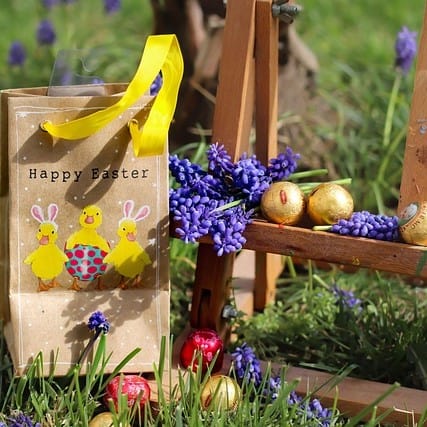
Essential Tasks for the August Garden
Table of Contents
August is a busy month in the garden, as it is a transitional period from summer to early Autumn. For avid gardeners, this month is a great time to carry out essential tasks that can shape the garden’s success in the coming months. Whether you’re nurturing a vibrant summer vegetables patch or cultivating ornamental beds or perennial flowers, understanding what needs to be done now will set you up for an abundant harvest and a beautiful landscape for the Winter months.
General Maintenance

August is the perfect time to focus on essential garden jobs to keep your garden thriving as listed below:
Watering
Watering in August is more than just a chore; it can significantly affect the health and productivity of your garden. As temperatures rise and moisture evaporates more quickly from the soil, understanding your plants’ specific hydration needs becomes vital. Deep watering techniques that encourage roots to reach down into the soil for nourishment will not only help your plants survive but thrive through the challenging summer heat.
Consider investing in a rain gauge to monitor water levels accurately, ensuring you’re giving each plant just what it requires. Grouping plants with similar water needs together can also streamline your efforts, allowing you to manage irrigation effectively while minimizing waste. Remember that it’s often better to water early mornings or late evenings when evaporation is lower—not only does this conservation strategy save on water bills.
Weeding
Pulling weeds on a regular basis serves as an essential task for the August garden because it prevents stubborn weeds from seeding and sprawling further into your planting areas. Weeds often compete for nutrients, sunlight, and water—resources that your plants desperately need as they prepare for Autumn. By dedicating time to this task you’re not only enhancing plant health but also promoting airflow within densely planted areas, reducing chances of fungal diseases that can arise during late summer humidity.
Vegetables and Herbs

Harvesting
Vegetables and herbs reaches their peak during August. This month offers the perfect opportunity to reap the rewards of all your hard work, but there’s more than just gathering produce; it’s also about understanding timing. Consider experimenting with staggered harvests on crops like Swiss Chard and Kale—leaving some leaves behind will encourage continuous growth while ensuring you always have fresh greens on hand.
Sow Cool-Season Crops
August presents a unique opportunity for gardeners to shift focus toward sowing cool-season crops. Among the essential tasks for the August garden is selecting vegetables and herbs that thrive in this transitional period. Varieties like Kale, Brussel Sprouts, Cabbage and Spinach not only flourish as days shorten but also develop deeper flavours after exposure to mild frosts. By planting these hardy greens now, gardeners can enjoy a bountiful harvest right through into Autumn.
Herbs such as Cilantro and Parsley also benefit from late-summer sowing. As they germinate in cooler soils, their growth is robust yet manageable—perfect for beginners looking to enhance their culinary creations with homegrown herbs.
It’s worth noting that some cool-season vegetables can be direct-seeded while others might prefer starting indoors before transplantation; experimenting with both methods can yield impressive results tailored to your microclimate. Lettuce, Radishes, and Broccoli are additional crops to start sowing seeds for the Autumn cool-season.
Monitor for Pests and Diseases
Utilizing integrated pest management (IPM) strategies can help you identify issues early on. Inspect your plants regularly; look under leaves for signs of aphids or spider mites—tiny adversaries that can wreak havoc if ignored. This month presents an opportune time to harness the power of natural predators. Introducing Ladybugs or Lacewings can significantly enhance your garden’s ecosystem by keeping harmful insects at bay without resorting to chemicals.
Practicing companion planting—pairing certain fruits with other plants known to deter pests—can create a more resilient environment. Harvesting ripe fruit promptly also prevents attracting pests that thrive on overripe produce, transforming what could be a weakness into a strength in your ongoing battle against unwelcome invaders.
Fruits
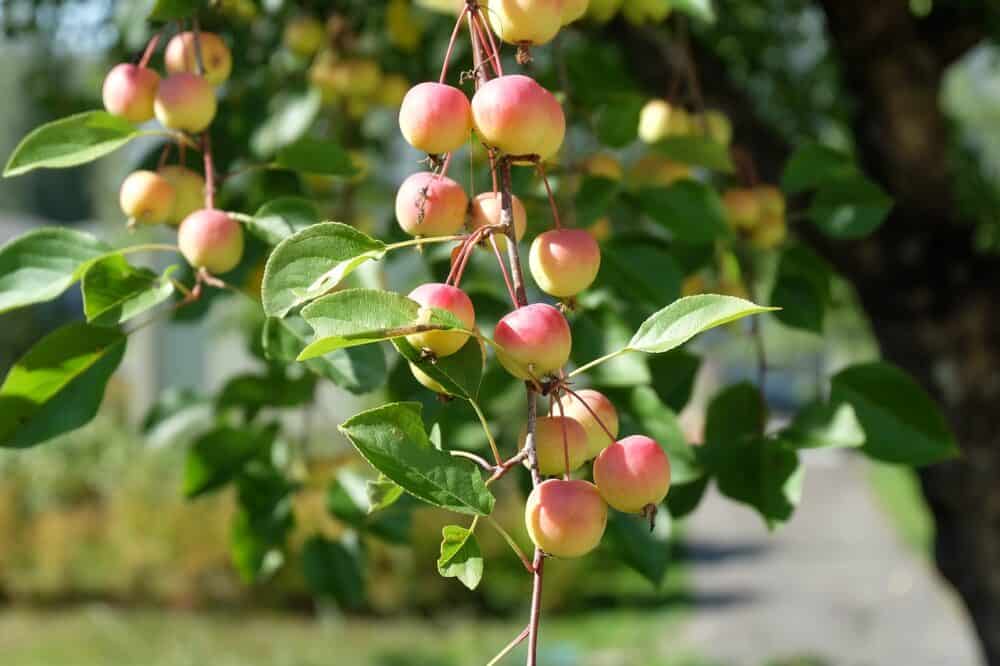
Pruning
Light pruning during late summer helps to remove dead or diseased branches while allowing sunlight to penetrate the canopy. This enhanced airflow minimizes pest infestations and fungal diseases, ensuring a healthier harvest in the coming months. Prune summer-fruiting Strawberry Plants and Raspberry canes that have finished fruiting.
This is a perfect opportunity to assess your tree’s structure. By selectively thinning out crowded areas, you not only shape the tree but also encourage more abundant fruiting in well-lit zones of the plant. Observing how much growth has occurred throughout the season helps gardeners make informed decisions about which branches to retain or remove, promoting vigorous growth and better yield in subsequent seasons. As you tend to your plants, consider employing proper tools like sterilized pruning shears to prevent disease spread—small actions lead to significant impacts in nurturing fruitful future gardens.
Netting
Netting fruits is an essential task for the August garden, offering a protective umbrella against pests and birds eager to feast on ripening produce. Choosing the right type of netting—light enough not to hinder pollination yet strong enough to ward off hungry intruders—is crucial in maintaining healthy crops while ensuring a fruitful yield. Beyond just protection, netting also introduces an interesting element to your garden. Those who love gardening concepts steeped in sustainability should consider using biodegradable materials whenever possible; they add another layer of eco-friendliness as they break down naturally over time.
Harvesting
Continue harvesting fruits like Apples, Pears, Plums, and Berries. Timing is key when it comes to harvesting—picking at optimal moments ensures bursts of flavour and nutrients. For instance, Tomato plants should be fully colored yet slightly firm while remaining resilient against bruising. Attending to your harvest means being vigilant about pests or overripe produce that could spread disease among your plants, essential work during this critical month for maintaining garden health.
Flowers
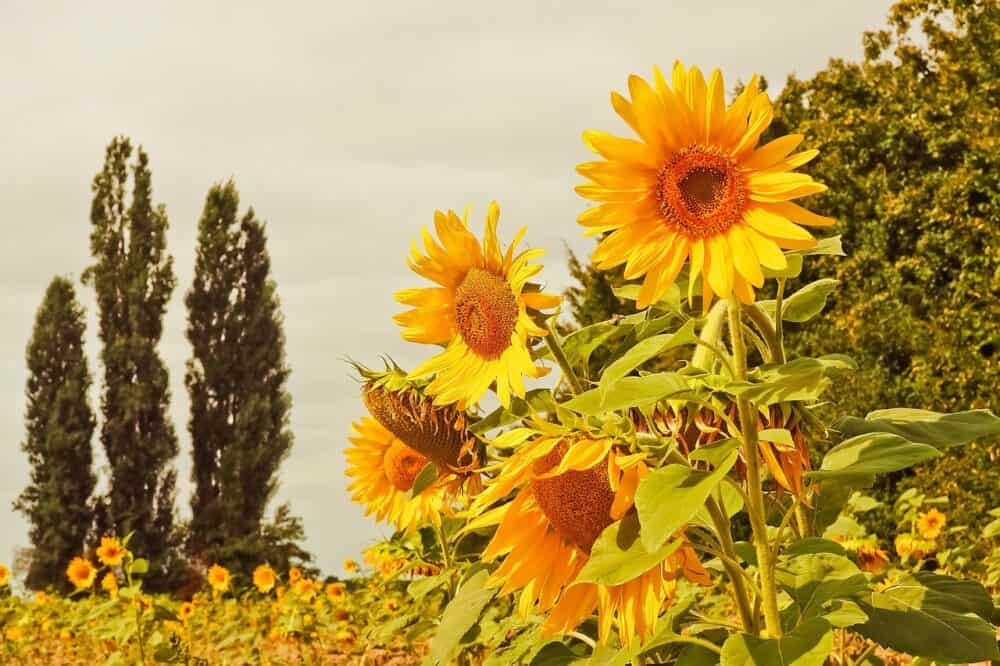
Deadheading
One of these critical tasks is pruning your summer flower borders and shrubs. By trimming back dead flowers and shaping overgrown branches, you’ll not only enhance the visual appeal but also stimulate new growth for next year’s flowers. This mid-summer trim can refresh plants like Hydrangeas and Butterfly Bushes, allowing them to channel energy into creating robust blooms at season’s end.
Deadheading is an opportunity to foster overall plant health. Regular removal of faded blossoms helps minimize fungal infections and pests attracted to decaying petals. Paying attention to each species’ particular needs can unlock insights about their growth habits. For instance, some plants benefit from vigorous pruning after flowering while others thrive with gentle care.
Divide Perennials
August presents a unique opportunity in the garden as many plants begin their late-summer bloom cycle. It is essential to divide and rejuvenate them for optimal growth in the coming seasons. Timing is crucial when it comes to flower divides; waiting until late summer means that you can observe just when these plants have peaked in size and blossom density. Take note of any crowding or overgrowth—this is an ideal moment to lift healthy roots and separate congested clumps into smaller divisions.
Not only will this promote better air circulation among your plants, reducing disease risk, but newly planted divisions can thrive with renewed energy as they settle into the ground. Consider sharing surplus plants with friends or alternatively implement them into less populated areas of your garden.
Planting
During this month, gardeners have an exceptional opportunity to select and plant late summer annuals and perennials that will bloom into Autumn, attracting vital pollinators like bees and butterflies. Consider varieties such as Asters or Goldenrod; they not only complement your existing palette but also provide essential food sources for these creatures as their options dwindle with the changing seasons.
Lawn Care
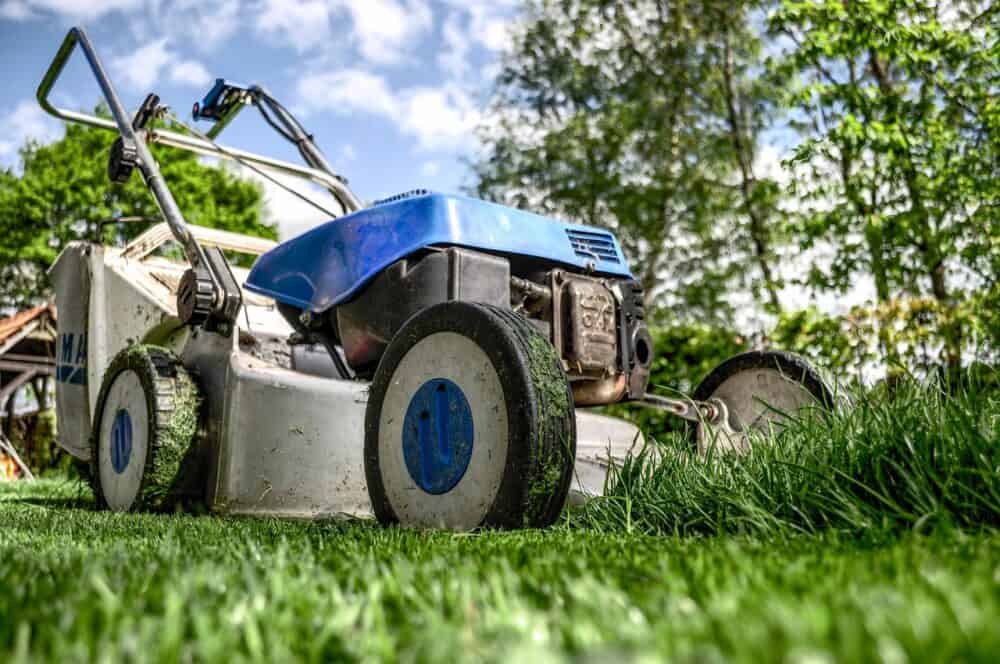
Gardeners face the unique challenge of maintaining a resilient lawn during August while bracing for the end of summer. One essential task is aeration, which is often overlooked but crucial for promoting healthy soil and strong root systems. Aerating your lawn allows vital nutrients, water, and oxygen to penetrate deep into the earth, encouraging robust growth as you prepare for Autumn. Using a core aerator can significantly enhance your turf’s vigour, especially in areas subjected to heavy foot traffic or drought conditions.
Over Seeding
Another cornerstone activity this month is overseeding with cool-season grasses. This strategic move not only helps fill in bare spots but also sets the stage for a lush landscape in the coming months. Opting for blends that thrive in your specific climate ensures that your lawn can withstand temperature fluctuations while achieving an even texture and rich green hue. While conducting these tasks, don’t overlook the importance of topdressing with compost or organic matter; it enriches soil quality and supports microbial life—dramatically enhancing overall lawn health.
Mowing
Mowing isn’t just a routine chore; it’s a dynamic process that sets the tone for your entire garden’s health in August. As summer flourishes, the grass growth can become unruly, and a well-mowed lawn not only enhances curb appeal but also encourages robust verdancy. One of the often-overlooked insights is that varying your mowing height throughout the season can create a more resilient lawn. During August’s warmer weeks, raising your mower blades slightly can promote deeper root development, allowing the grass to withstand heat stress and drought conditions better.
Also consider adopting the practice of Grasscycling—leaving clippings on your lawn instead of bagging them. These natural nutrients break down quickly, enriching the soil with nitrogen while reducing waste. By adjusting your mow schedule based on weather patterns and actively engaging with seasonal challenges such as moisture levels or natural enemies and pests, you align yourself closely to nature’s rhythms.
Watering
Watering is often viewed as a simple task, yet in the context of lawn care, it’s an art that can make or break the health of your grass. One fresh approach to consider for August gardens is the principle of deep watering. Instead of light sprinklings that may only dampen the surface, aim to saturate the soil to a depth of six inches. This encourages grass to grow deep roots into the soil, fostering resilience against drought and improving nutrient absorption during those sweltering summer days.
Timing also plays a crucial role in effective watering strategies. Early morning sessions are ideal as they minimize evaporation and allow grass blades to dry before evening falls—reducing the risk of diseases like fungal infections. Additionally, understand your lawn’s unique needs; factors such as soil type and sun exposure should inform how much water gets delivered during these essential tasks. By embracing these methods, you not only support vibrant growth but create a lush lawn that thrives even in challenging weather conditions.
Trees and Shrubs

Pruning
This month presents a unique opportunity to assess the health of your greenery after a long summer’s growth. Focus on pruning lightly to remove dead or damaged branches, which promotes air circulation and allows sunlight to reach new foliage more effectively. Incorporating this into your routine can invigorate older shrubs, encouraging fresh blooms for the forthcoming seasons.
Consider mulching around the base of your Trees and Shrubs. This simple yet powerful task serves multiple purposes: it retains soil moisture during those hot days, suppresses weeds that compete with your plants for resources, and even adds organic matter as it breaks down over time. You might also experiment with companion planting among your established trees and shrubs to enrich their environment—certain flowers attract beneficial insects while deterring pests naturally. By embracing these strategies in August, you ensure that your garden not only thrives but also becomes a vibrant ecosystem supporting wildlife as autumn approaches.
Watering
Watering Trees and Shrubs in your garden during the scorching heat of August is not just a routine chore; it’s an essential task that can set the stage for their ongoing health and vitality. As temperatures soar, many plants enter a state of stress, especially those newly planted or deeply rooted in dry soil. To combat this, consider implementing deep watering techniques that encourage roots to venture deeper into the ground. This habit not only helps them withstand drought conditions but also promotes healthier growth as they tap into moisture reserves below.
Another effective strategy is mulching around your Trees and Shrubs. A layer of mulch acts as an insulating buffer, preventing moisture evaporation while regulating soil temperature. This simple yet powerful technique can reduce the frequency of watering sessions significantly while contributing to a richer ecosystem by decomposing organic materials back into the soil. By focusing on these holistic approaches throughout August, you ensure your garden remains resilient against heat waves—an investment that pays dividends well beyond the summer months.
Compost and Soil
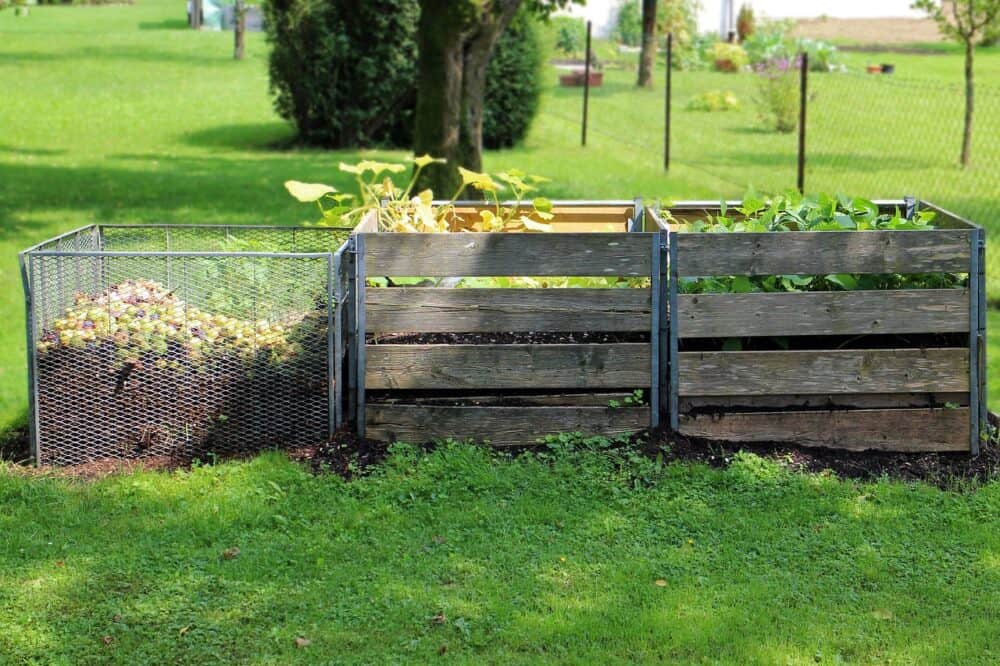
Composting
Continue to add garden waste to the compost pile and turn weekly. By adding this organic matter from the Compost Pile will not only enrich the soil but will also improves its texture, supporting root development as plants prepare themselves for shift in temperature. As you tackle these essential tasks remember that cultivating patience and care today will reap abundant rewards in the Autumn garden.
Soil Preparation
August is an ideal period to assess soil health. Consider performing a soil test to determine nutrient levels; this proactive step often brings surprising insights into what amendments might be necessary for optimal growth. Prepare beds for Autumn planting by adding compost and other organic matter.
Planning

Garden Journal
A Garden Journal is the perfect opportunity to document what’s thriving and what may need a little more attention—the colorful blooms may momentarily distract from wilting leaves or unruly weeds, but your journal can serve as a trusty reminder to keep everything in balance.
Capture the seasonal shifts by jotting down the specific varieties of fruits and vegetables that are consistently producing high yields. Consider including detailed observations about pest activity or any beneficial insects you might encounter. This level of awareness not only helps with planning future gardens but also enables you to make informed decisions on pest management or companion planting strategies for the upcoming seasons. By embracing this approach, you’ll transform your Garden Journal into an indispensable tool for cultivating not just plants, but knowledge and resilience in your gardening practice.
Conclusion
By staying on top of these essential tasks, you will ensure your garden remains healthy and productive throughout August and into the Autumn season. It is also the perfect opportunity to assess and rejuvenate your outdoor space and with a little dedication and effort, you will set the stage for a bountiful harvest going forward.

